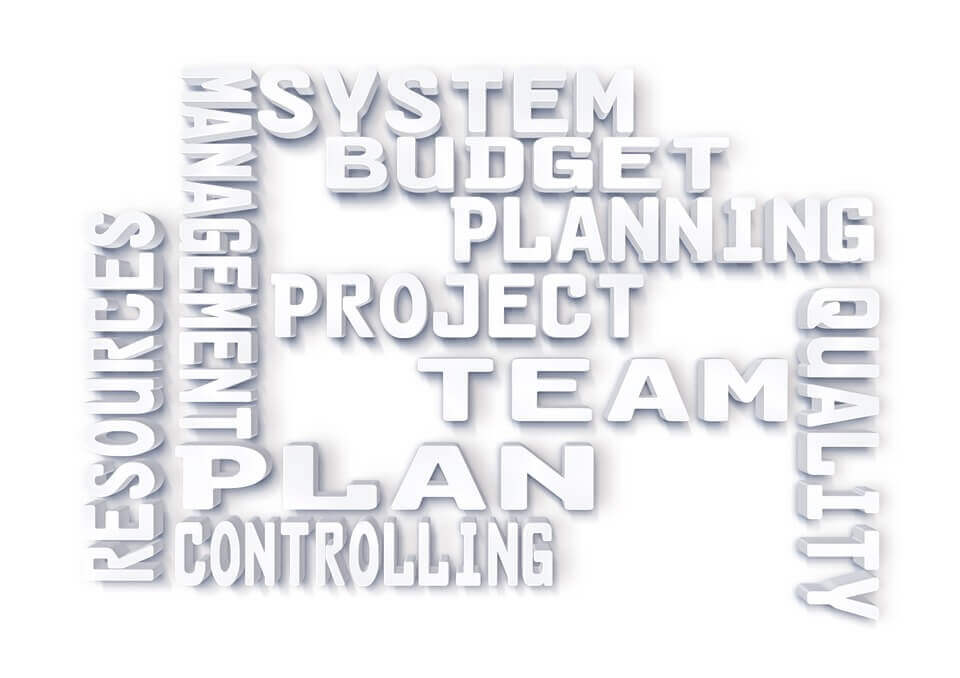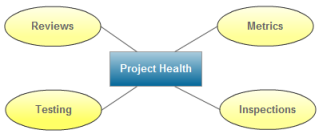
This checklist describes 8 basic steps to help project managers succeed in planning and fulfillment of their objectives. Such things as forecasting, analysis, software, communication, payment, performance, change management, and lessons learned are considered top priority for managing projects successfully – from their initiation and planning to execution and closure.
Although the checklist shares common ideas and suggestions, without paying attention to details, it is helpful for PMPs, experienced project managers, and beginners. You can use it as a starting point for building your success in project management.
Forecasting: Look a Few Paces Ahead
Forecasting helps project managers cope with the uncertainty of the future of their projects. The ability to use forward visioning in project management grants higher chances for success by allowing executive personnel to review data from the past and analyze trends for current initiatives. By possessing this ability, a PM can look a few paces ahead and plan out a better scenario of project implementation.
Forecasting is mainly involved in the planning process, still it can be used throughout the entire project lifecycle for change management purposes. To create an accurate forecast, a PM needs to consider all assumptions and constraints relating to the project and then figure out in what way available resources can best be utilized to generate the expected revenues and solve the business problem. All possible risks and issues should be taken into account.
To keep the forecast current, the PM needs to explore project changes and make appropriate responses. As experience shows, accurate forecasting in combination with effective change management maximizes overall project performance and minimizes the risk of failure.
Analysis: Fight against Weaknesses in Project Management
A thorough analysis of project data and facts lets disclose and understand cause-effect relationships of events, thereby providing project managers with a foundation for effective problem solving and decision making. Links between causes and effects clarify the big-picture view of the project’s health, from reviews and metrics to testing and inspections.
An analysis-based approach to project management helps decision makers identify weak and “diseased” processes that aren’t working well and then find right solutions. Business analysts are enabled to diagnose diseases early and fight against weaknesses at the “infancy” stage, rather than trying to repair a systematic problem or disease that has been fossilized into the project environment.

Technology: Use Online Tools for Project Managers
Web-based tools and online software provide terrific PM solutions. They are great for storing, sharing and updating project data in real time. Team members can access a single remote database to view their tasks, schedules, checklists, assignments, files, graphs, and other records. Executives can view employee attendance, measure job performance, and get team feedback.
Secure SSL connections, automatic database backups and user access control in web-based solutions make project management much safer, faster and easier. Some examples are ProjectManager.com, Basecamp.com, Asana.com. If you see desktop client-server solutions as alternatives to online tools, then take a look at CentriQS.com, a highly customizable package for enterprise-level project management, or traditional MS Project.
Communication: Strengthen Teamwork and Collaboration
Lack of communication is one of the key reasons of project failure. People can’t work as a joint team without effective communication. Teamwork is impossible when team members do not exchange their thoughts, ideas and decisions. The effectiveness of knowledge sharing and collaboration is based on how well team members communicate on the project with each other and management. The project manager needs to take care of planning and maintaining communications.
Tools and strategies (such as daily status meetings, project management software, shared documentation, real-time calendars, etc.) will help open communication channels, improve teamwork and strengthen collaboration. The following graph demonstrates the key components of effective communications planning:

Billing: Get Paid for the Work Done
Businesses use billing to recover sales price from their customers. In project management this approach works the same way. By accurately accounting for time and effort spent in projects, PMs establish bulletproof billing processes that flawlessly incorporate time tracking, sales and invoicing into a single mechanism. Then errors in job and product costing will be minimized, and billing processes will be expedited. Accounting software tools will help project managers track billable and non-billable hours, automatically generate invoices, and get paid for the work done.
Performance: Identify and Solve Problems Quickly
When a business organization invests money, labor, time, technology and other resources in a project, its primary concern is always what it’s getting in return for the investments. The PM is ultimately responsible for ensuring that this project comes up on schedule, stays within accepted budget, and meets quality requirements.
Performance measurement provides the manager with visibility into work progress and helps make sure the approved constraints of time, cost, scope and quality are satisfied. In case something goes wrong performance metrics alert the senior, so corrective actions can quickly be taken to get the project back on right track.
Several examples of variables that provide a reliable performance measurement are as follows:
- Schedule Variance (SV). A positive SV (SV>0) means the project is earning more value than expected. If SV is less than zero (SV < 0), the project goes behind schedule. And a zero SV (SV=0) proves that everything is fine and the project is on schedule.
- Cost Variance (CV). This variable explores to what degree the budget constraint is satisfied. A positive CV is better than a negative one – the project is earning greater value and is under budget. A zero CV indicates that the budge is being used as expected.
Schedule Performance Index (SPI) and Cost Performance Index (CPI) are two more indicators that help early identify schedule-related and cost-related problems. The project manager can use these and other metrics to identify cost, budget, quality and schedule problems early and take steps for quick re-mediation.
Flexibility: Keep Changes on Right Track
Project management aims to make change to a given object or environment. Anything that is driven by a project is managed for change. Meanwhile, project itself changes and so the project manager needs to keep the changes on right track. If something goes wrong this executive should immediate respond by accommodating the change in the plan and minimizing failure risks. Flexibility lets the PM feel comfortable in ever-changing environments. Being flexible means possessing the ability to recognize a change early and cost-effectively vary or accommodate its consequence within a certain timeframe that doesn’t break project deadlines.
Lessons Learned: Use Past Experiences in Future Initiatives
Upon completion of every project it is a best practice to take a look back at all the work done and identify why things went well or sank like a stone. Lessons learned from past projects help PMs avert same troubles and implement tried-and-true solutions in their current and future initiatives.
By conducting a thorough review of your previous project you can identify successes, failures, and goals for improvement. Try to highlight 4-5 factors that most contributed to project success, and then identify 4-5 things that could be done better. Document and share these findings with your team, customer and sponsor of your current project. Ideally you should get input from all project participants.











